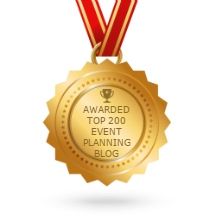How to Engage a Tradeshow Audience Year-Round by Rob Murphy
Saturday, January 15, 2011
Sharing this great blog my Mr. Rob Murphy hope you get some good points on it.
In this article, you'll learn...
Four ways to consistently engage your tradeshow audience
How to use tradeshows as a long term, lead-generation tool
Tradeshow participation is proven to build brand awareness and help marketers discover new business opportunities. But the companies that fare the best—and maximize their return on investment (ROI)—are those that realize that simply showing up isn't enough.
This article outlines how to build a communications strategy that keeps customers and prospects fully engaged before, during, and after the show.
1. Plan in advance
The first step toward tradeshow success is creating an engagement timeline to support your company's strategic marketing plan.
It's also important to link all forms of communication (advertising, online marketing, media relations, public relations) together to achieve an action-oriented goal. Make sure your messaging aligns with your overall marketing strategy and clearly explains how your products or services can benefit customers and prospects. Value-added information, such as research data or company news that will help recipients solve a specific business challenge, is also helpful.
The key is to make sure communications are free of self-serving propaganda that could alienate customers and prospects.
2. Build quality traffic
Having a tradeshow exhibit doesn't necessarily ensure quality foot traffic. Engage customers and prospects well in advance of any event, and make it clear how they stand to benefit from visiting your booth. Incentives can include special show pricing, access to exclusive research or information, or an in-booth gift (or other giveaway) that provides a meaningful experience to prospects.
Promote these incentives well ahead of time through direct mail or email and on your website, or co-promote with the tradeshow organizer to help boost traffic to your booth and buzz around your participation.
When planning a pre-show marketing strategy, ensure that the communication channels you choose are appropriate for your audience and industry. For example, if your target audience is young designers, then use social media, video, and email. For targets such as manufacturing plant personnel, who are often away from their computers, consider traditional approaches such as direct mail or print advertising.
3. Engage on-site
To effectively engage and interact with show attendees, invest the time and effort to train your on-site staff. Be sure to underscore how much you've invested into the show, and explain that staff performance will have a significant impact on its overall success. Ask for a personal commitment from all staff to reach preset sales goals. If necessary, go as far as breaking down costs by the minute, per person. Consider using an incentive program to encourage your sales team to attain your goals.
During the training process, clearly articulate the criteria your sales team should use to qualify visitors and determine whether they are high-quality leads. Give the sales staff tips on how to disengage with unqualified visitors politely, but quickly.
To prepare, practice engaging various visitors; time the interactions to test efficiency. In addition, provide the staff with a list of key customers and prospects, along with protocol guidelines for ensuring a smooth process when VIPs show up.
4. Follow up
Communication with customers and prospects shouldn't end when the tradeshow closes its doors. The show itself may be just the starting point of the sale, which could happen months later.
To ease follow-up, be sure to annotate the leads (list the actions you need to take) and rate them based on your sales and closing criteria to ensure the "hottest" leads get immediate attention. That could mean providing a quote or the additional information the prospect requested, or saying a simple "thank you" to those who aren't ready to buy your product or service just yet.
All of your contacts should be organized into a centralized database (segregated by type, if needed) to facilitate regular, ongoing communication. Use the database to share company announcements, media mentions, or relevant news to show that you're engaged with their business. And remember: Never ignore a lead. You never know who will turn out to be the most beneficial connection.



.jpg)
.jpg)
.jpg)
.jpg)
%20copy.jpg)
.jpg)


0 comments